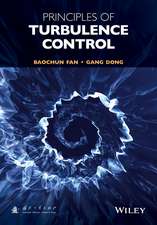Computational Methods in Solid Mechanics: Solid Mechanics and Its Applications, cartea 29
Autor A. Curnieren Limba Engleză Paperback – 8 oct 2012
| Toate formatele și edițiile | Preț | Express |
|---|---|---|
| Paperback (1) | 1222.80 lei 6-8 săpt. | |
| SPRINGER NETHERLANDS – 8 oct 2012 | 1222.80 lei 6-8 săpt. | |
| Hardback (1) | 1228.77 lei 6-8 săpt. | |
| SPRINGER NETHERLANDS – 31 mai 1994 | 1228.77 lei 6-8 săpt. |
Din seria Solid Mechanics and Its Applications
- 20%
 Preț: 698.09 lei
Preț: 698.09 lei - 24%
 Preț: 800.14 lei
Preț: 800.14 lei -
 Preț: 402.14 lei
Preț: 402.14 lei - 15%
 Preț: 640.06 lei
Preț: 640.06 lei - 15%
 Preț: 653.14 lei
Preț: 653.14 lei - 18%
 Preț: 1124.92 lei
Preț: 1124.92 lei - 15%
 Preț: 643.84 lei
Preț: 643.84 lei - 18%
 Preț: 1119.38 lei
Preț: 1119.38 lei - 20%
 Preț: 573.17 lei
Preț: 573.17 lei - 18%
 Preț: 1607.92 lei
Preț: 1607.92 lei - 17%
 Preț: 393.72 lei
Preț: 393.72 lei - 17%
 Preț: 459.40 lei
Preț: 459.40 lei - 18%
 Preț: 959.98 lei
Preț: 959.98 lei - 18%
 Preț: 747.71 lei
Preț: 747.71 lei -
 Preț: 388.55 lei
Preț: 388.55 lei - 18%
 Preț: 787.15 lei
Preț: 787.15 lei -
 Preț: 406.25 lei
Preț: 406.25 lei - 15%
 Preț: 639.08 lei
Preț: 639.08 lei - 24%
 Preț: 784.82 lei
Preț: 784.82 lei - 15%
 Preț: 643.34 lei
Preț: 643.34 lei - 18%
 Preț: 958.07 lei
Preț: 958.07 lei - 18%
 Preț: 1228.15 lei
Preț: 1228.15 lei - 18%
 Preț: 734.27 lei
Preț: 734.27 lei - 18%
 Preț: 1233.06 lei
Preț: 1233.06 lei - 18%
 Preț: 1236.19 lei
Preț: 1236.19 lei - 18%
 Preț: 950.96 lei
Preț: 950.96 lei - 18%
 Preț: 906.48 lei
Preț: 906.48 lei - 18%
 Preț: 964.54 lei
Preț: 964.54 lei - 20%
 Preț: 995.75 lei
Preț: 995.75 lei - 18%
 Preț: 953.65 lei
Preț: 953.65 lei - 18%
 Preț: 1239.67 lei
Preț: 1239.67 lei - 18%
 Preț: 962.35 lei
Preț: 962.35 lei - 18%
 Preț: 964.54 lei
Preț: 964.54 lei - 18%
 Preț: 913.11 lei
Preț: 913.11 lei - 18%
 Preț: 1226.90 lei
Preț: 1226.90 lei
Preț: 1222.80 lei
Preț vechi: 1491.22 lei
-18% Nou
Puncte Express: 1834
Preț estimativ în valută:
233.98€ • 244.95$ • 193.60£
233.98€ • 244.95$ • 193.60£
Carte tipărită la comandă
Livrare economică 05-19 aprilie
Preluare comenzi: 021 569.72.76
Specificații
ISBN-13: 9789401044868
ISBN-10: 9401044864
Pagini: 420
Ilustrații: XII, 404 p.
Dimensiuni: 155 x 235 x 22 mm
Greutate: 0.59 kg
Ediția:1994
Editura: SPRINGER NETHERLANDS
Colecția Springer
Seria Solid Mechanics and Its Applications
Locul publicării:Dordrecht, Netherlands
ISBN-10: 9401044864
Pagini: 420
Ilustrații: XII, 404 p.
Dimensiuni: 155 x 235 x 22 mm
Greutate: 0.59 kg
Ediția:1994
Editura: SPRINGER NETHERLANDS
Colecția Springer
Seria Solid Mechanics and Its Applications
Locul publicării:Dordrecht, Netherlands
Public țintă
ResearchCuprins
1 One-Dimensional Bar Model Problem (Principle of Virtual Work).- 1.1 Kinematics : material description.- 1.2 Dynamics: equilibrium of forces.- 1.3 Mechanics : principle of virtual work.- 1.4 Geometric and material non-linearities.- 1.5 Constitutive laws for solid materials.- 1.6 Discontinuities in space.- 1.7 Thermics : heat equation.- 1.8 Mathematics : functional analysis notions.- 1.9 Summary.- 2 Spatial Discretisation by the Finite Element Method.- 2.1 Global overview : Galerkin method.- 2.2 Nodal FEM : piecewise polynomial basis functions.- 2.3 Localisation of mesh nodal displacements.- 2.4 Interpolation of element nodal displacements.- 2.5 Integration of element nodal forces.- 2.6 Assembly of mesh nodal forces.- 2.7 Properties of force vectors.- 2.8 Automation: isoparametric maps and numerical integration.- 2.9 Boundary conditions condensation.- 2.10 Algorithm: element loop.- 2.11 Practice : heat equation discretisation.- 2.12 Accuracy : error norms and estimates.- 2.13 Summary.- 3 Solution of Non-Linearities by the Linear Iteration Method.- 3.1 Linearisation : classical and directional derivative.- 3.2 Nominal stress linearisation : nominal tangent modulus.- 3.3 Linearized equations of motion : mass and stiffness matrices.- 3.4 Finite element mass and stiffness matrices.- 3.5 Assembly of the mass and stiffness matrices.- 3.6 Properties of the mass and stiffness matrices.- 3.7 Linearized heat equation.- 3.8 Condensation of boundary conditions after linearisation.- 3.9 Linear iteration method : algorithm and variants.- 3.10 Standard and modified Newton methods.- 3.11 Secant or conjugate gradient methods.- 3.12 Gradient and Jacobi methods.- 3.13 Local and global convergence of iterative methods.- 3.14 Local convergence of the LIM : consistency and stability.- 3.15 Glocal convergence of the LIM : damping and continuation.- 3.16 Summary.- 4 Time Integration by the Finite Difference Method.- 4.1 Generalised trapezoidal rule or Euler scheme (applied to the linear heat equation).- 4.2 Modal analysis of the heat equation.- 4.3 General error analysis : summary and glossary.- 4.4 Stability of the heat-trapezoid algorithm.- 4.5 Consistency of the heat-trapezoid algorithm.- 4.6 Convergence of the heat-trapezoid algorithm.- 4.7 Generalized trapezoidal rale or Newmark scheme (applied to the linear wave equation).- 4.8 Modal analysis of the wave equation.- 4.9 Stability of the wave-trapezoid algorithm.- 4.10 Consistency of the wave-trapezoid algorithm.- 4.11 Convergence of the wave-trapezoid algorithm.- 4.12 Summary.- 5 Compact Combination of the Finite Element, Linear Iteration and Finite Difference Methods.- 5.1 Problem statement review.- 5.2 Galerkin-FE algorithm review.- 5.3 Newton-LI algorithm review.- 5.4 Newmark-FD algorithm review.- 5.5 Combining the FE, LI and FD algorithms.- 5.6 Nonlinear thermics algorithm.- 5.7 Nonlinear dynamics algorithm.- 5.8 Nonlinear thermodynamics synthesis.- 5.9 Convergence review.- 5.10 Programming guidelines (TACT example).- 5.11 FD and LI methods programming.- 5.12 FE and algebraic methods programming.- 5.13 Summary.- 6 Two- and Three-Dimensional Deformable Solids.- 6.1 Kinematics : material description.- 6.2 Dynamics: balance of forces.- 6.3 Mechanics : principle of virtual work.- 6.4 Objective constitutive laws.- 6.5 Nominal stress linearisation.- 6.6 Constitutive laws for solid materials.- 6.7 Spatial discretisation in three dimensions.- 6.8 Linearized discrete mechanics.- 6.9 Isoparametric solid finite elements.- 6.10 Finite difference time integration.- 6.11 Final algorithm.- 6.12 Summary.- Conclusion.- Appendix A : List of Symbols.- 1.- 2.- 3.- 4.- 5.- 6.- Appendix B : Exercises.- 1.- 2.- 3.- 4.- 5.- 6.






